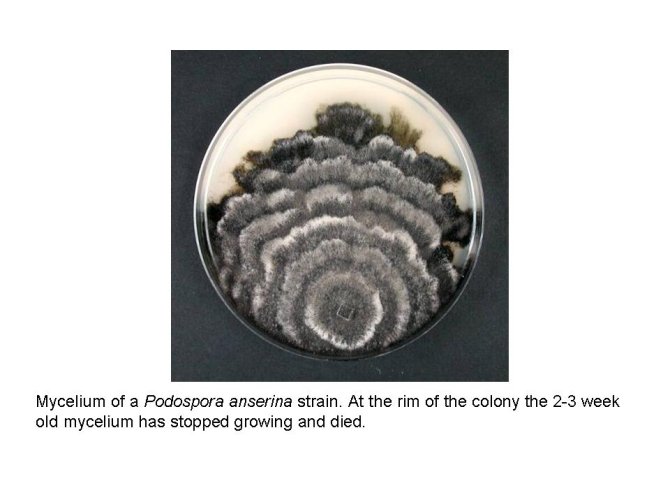Project
The origin of senescence in Podospora species
Most fungi show indeterminate growth, and are ‘immortal’ but exceptions do exist. Podopora anserina is a coprophilous fungus that in nature grows exclusively on the dung of herbivores. On dung, the fungus has only a limited period in which to form its mycelium and produce sexual spores.
Description:
Under laboratory conditions it is one of the few known fungal species with a limited life span when supplied with unlimited resources. It lives up to 3 weeks on rich medium in which it slowly deteriorates, loses its fertility and finally dies.
As a consequence of the life style in which the ecological growth conditions are ephemeral and restricted in size, there is a strong selection on early reproduction. Senescence could have evolved either 1. as an antagonistic pleiotropic effect of genes with favorable effects early in life and deleterious late effects or 2. by the accumulation of late-acting deleterious mutations.
P. anserina may thus have acquired several elements that limit the host’s lifespan after the expected period of reproduction on dung. In this research we would like to look at the ecology and life expectancy of different related Podospora species from different culture collections.

Used skills:
microbiological and molecular biology skills, bioinformatics, some statistical analysis to interpret the results.
Requirements:
Molecular and Evolutionary Ecology (GEN20304) and Genetic Analysis Tools and Concepts (GEN30306) are good preparations.
Reference:
Jamet-Vierny et al., 1997 Contribution of various classes of defective mitochondrial DNA molecules to senescence in Podospora anserina. Curr. Genet. 31: 171-178